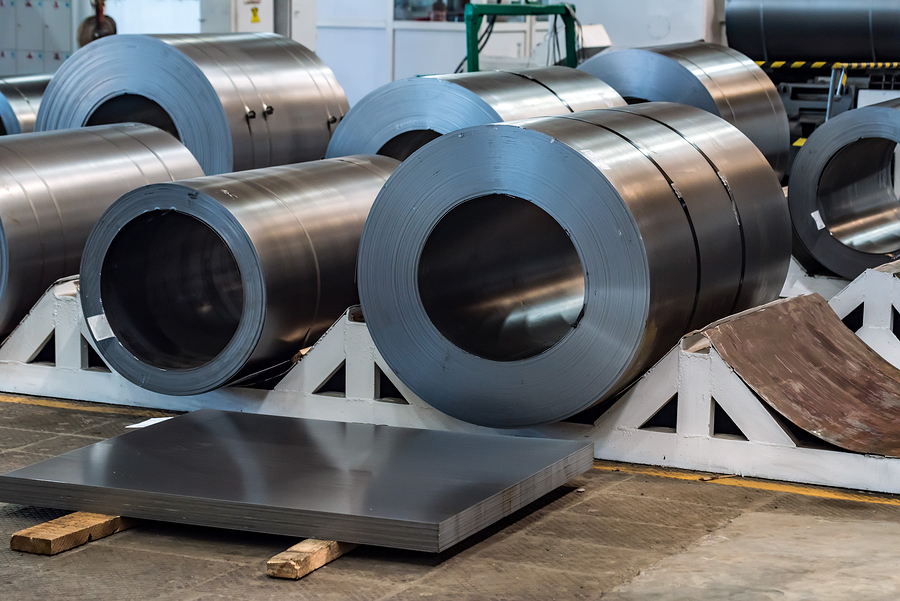
How Metal Service Centers Can Achieve Process Optimization
The worldwide metal marketplace is changing. Numerous economic forces — most notably, dwindling economic stimulus packages, expiring automotive manufacturing subsidies, and tightening monetary policies — are hamstringing the once-booming space, according to research from PNC Financial Services Group. Virtually all parties within the sector are therefore bracing for sluggish growth over the next year, particularly American metals producers. Metal service centers are among those likely to experience a stalemate stemming from this hesitant outlook. While small and medium manufacturers managed to stay strong during the first quarter of 2019 — 87 percent of U.S. firms in these categories reported positive outlooks, per data from the National Association of Manufacturers — the worrying developments mentioned above make process optimization essential for metal service centers intent on not only meeting their margins but also thriving.
These unique entities can take numerous pathways to operational improvement. However, some select methodologies stand out among the crowd. Here are three of those strategies, along with additional insight into how metal service centers can use them to catalyze shop floor optimization and organizational success.
Cycle time reduction
Highly functioning metal service centers often maintain diverse inventories. This is an effective approach, laying the groundwork for multiple revenue streams and reducing financial risk to the business. That said, operational diversification can create problems, especially where cycle time is concerned. With so many different materials to work through, some metal service centers attempt to tackle workloads as quickly as possible without much preparation or baseline metrics for how long certain tasks should take. This causes production ambiguity, mucks up operations, and drags down service quality. Fortunately, there is a relatively simple solution to this common shop floor faux pas — it all comes down to process tracking and improvement.
Metal service centers must monitor their workflows and develop minimum job completion thresholds. Coil slitting and coil cutting require different time expenditures. By assigning specific values to these and other mission-critical activities and developing fleshed-out process frameworks, metal service centers can then figure out production capacity across multiple units of time — shifts, weeks, months, quarters, and years — identify and address wastage and cut cycle times. Even the smallest reductions can create a ripple affect across the shop floor, generate real return on investment, and better position the business for success now and in the future.
Conversion cost reduction
The material that comes through the doors of most metal service centers is not ready for consumption. Production teams must convert the raw metal into transportable and useable formats — most roll the material into industry-standard coils. Reformatting rigid metal necessitates considerable manufacturing power and prowess, which is why the expenses associated with this activity, called conversion costs, eat up significant portions of metal service centers’ budgets. The typical roll forming setup, an essential part of the conversion process for most of these firms, costs anywhere from $200,000 to $2 million up front, according to Dahlstrom Roll Forming. This amount, combined with ancillary fees related to machine maintenance, can weigh heavy on the bottom line.
Reducing and containing these expenses is critical to operational optimization, but how can metal service centers achieve this goal? Generating as much ROI on roll forming equipment as possible is among the most effective methods. Most forward-thinking companies in the niche do this by running high volumes and offsetting the cost of installation and maintenance. Tactical equipment deployment is another effective methodology for cutting conversion costs. Metal service centers do not necessarily need multiple roll forming lines to process diverse arrays of material, as most alloys have similar physical profiles and can therefore run through a single machine with slight adjustments. Together, these tweaks can build the foundation for major conversion cost reduction and catalyze shop floor optimization.
Effective inventory management
Metal service centers typically serve small or medium manufacturers that cannot forge productive and cost-effective relationships with massive materials providers due to various variables. These more compact manufacturing firms navigate mercurial terrain, weathering alternating production booms and slumps. They need operational partners that can support them in these situations and every scenario in between. Metal service centers typically fit the bill because they offer holistic services — most notably, easy-to-access inventories, per Manufacturing.net. For this reason, inventory management ranks among the most critical functionalities for modern metal service centers, as those that cannot keep essential supplies in stock are unable to effectively meet customers’ needs. That said, there is another side to this particular issue. Overstocking products can be similarly damaging to the budget, for unclaimed products take up valuable space and eventually become obsolete if unused. Striking a balance here is critical and should be the centerpiece in any process optimization program.
What exactly can metal service centers do to facilitate an effective and balanced inventory management? Sussing out baseline inventory conditions is the ideal first step. This might involve finding answers to key operational questions, such as, “How much inventory do I have?” Or, “How often does my inventory turn over?” By exploring these and other issues, the businesses in this niche can figure out their actual inventory needs and pare down their stores to ensure that there are enough products for contracted customers but not so many that widespread wastage will occur.
There is no denying that metal service centers must do all they can to comport with marketplace conditions, and that could entail pursuing some of the process optimizations mentioned above.
Is your metal service center interested in staving off external marketplace forces through process optimization? Consider connecting with USC Consulting Group today. We have been collaborating with organizations across all industries for more than five decades, deploying our seasoned operational experts who offer actionable shop floor solutions that boost efficiency and productivity and bolster the bottom line. Contact us now to learn more about our experience and how we can help your company find success in the metals industry, no matter the conditions.







